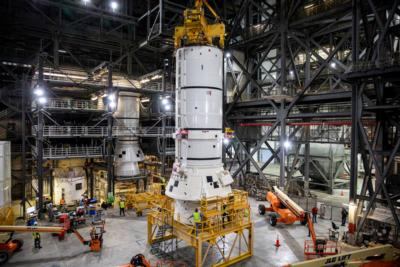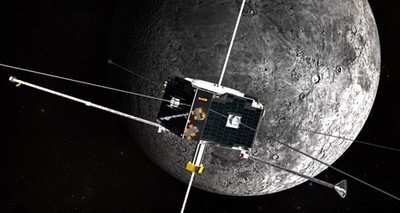Fuel Leak Delays Test Flight of SLS and Orion
NASA’s 21st Century lunar exploration program—dubbed Artemis, after the mythological Greek goddess of the hunt, vegetation, and somewhat vexingly chastity and childbirth—is off to an inauspicious start. Artemis I, the program’s inaugural mission, was scrubbed at 08:34 EDT on Monday, 29 August when technicians discovered a fuel leak and a possible crack in the enormous SLS rocket’s core-stage—the central structure to which the vehicle’s primary engines are mounted.

A revised Artemis I launch date has yet to be formally announced. NASA has backup launch windows on 02 and 05 September, but whether or not engineers identify the cause of the leak and fix such prior to those dates remains to be seen.
Former NASA engineer Homer Hickham states: "The fear now is that the problem is in engine three. If so, it can't be swapped out on the pad but will have to go back to the [vehicle assembly] building. The delay will be not days but weeks. We shall see. There's tons of data for the engineers to study before they can come to any conclusion about today's attempt and whether the rocket can stay on the pad and try for Friday."
In June 2022, NASA performed a wet dress rehearsal during which engineers filled the SLS with fuel and performed a mock countdown. The rehearsal was canceled with 29 seconds left on the countdown clock due to a hydrogen-fuel leak.
When it does launch, Artemis I will be an unmanned test flight of the United Launch Alliance’s SLS rocket and the Orion multi-purpose crew vehicle in which astronauts will, eventually, journey to the moon. Artemis I’s Orion capsule is populated with a trio of sensor-stuffed mannequins by dint of which the space agency will record acceleration, vibration, and radiation levels over a 42-day round-trip that will—barring further hiccups—come within sixty-miles (one-hundred-kilometers) of the moon. Upon attaining lunar orbit, the craft will deploy small satellites to study the lunar surface.
Another of Artemis I’s objectives is to test the Orion capsule’s heat shield—which at 16-feet in diameter is the largest ever built. Upon Orion’s reentry into Earth’s atmosphere, the heat shield will need withstand speeds of up to 25,000-miles-per-hour and temperatures as high as five-thousand-degrees-Fahrenheit (2,760 degrees Celsius)—roughly half as hot as the Sun’s surface.

That a launch in the works since 2017 has been scrubbed because of a problem formerly observed and ostensibly corrected does not bode well for an ambitious and expansive program, the five planned launches of which are slated to cost American taxpayers $4.1-billion—apiece. A news media in thrall to Washington D.C. has artfully obfuscated the stone-cold facts that Artemis is severely over budget and delayed. Speaking during a meeting of the House Committee on Science, Space, and Technology, NASA Inspector General Paul Martin took issue with Artemis contractors Boeing and Lockheed Martin, alleging federal government contracts favored the two companies to NASA’s and Artemis’s detriment.
Longtime U.S. space policy analyst Marcia Smith believes the inspector general’s report had a more nuanced point: that NASA isn’t being transparent about Artemis’s costs. “He’s an auditor, he’s trying to pull it all together,” Ms. Smith said of the inspector general. Of NASA’s relative autonomy, broad fiscal license, and lack of direct Congressional oversight, Smith adds: “[Congress] should know what they’re getting themselves into.”
 Aero-News: Quote of the Day (10.27.25)
Aero-News: Quote of the Day (10.27.25) ANN's Daily Aero-Linx (10.27.25)
ANN's Daily Aero-Linx (10.27.25) NTSB Prelim: Lancair 320
NTSB Prelim: Lancair 320 Airborne Programming Continues Serving SportAv With 'Airborne-Affordable Flyers'
Airborne Programming Continues Serving SportAv With 'Airborne-Affordable Flyers' Airborne-Flight Training 10.23.25: PanAm Back?, Spirit Cuts, Affordable Expo
Airborne-Flight Training 10.23.25: PanAm Back?, Spirit Cuts, Affordable Expo




